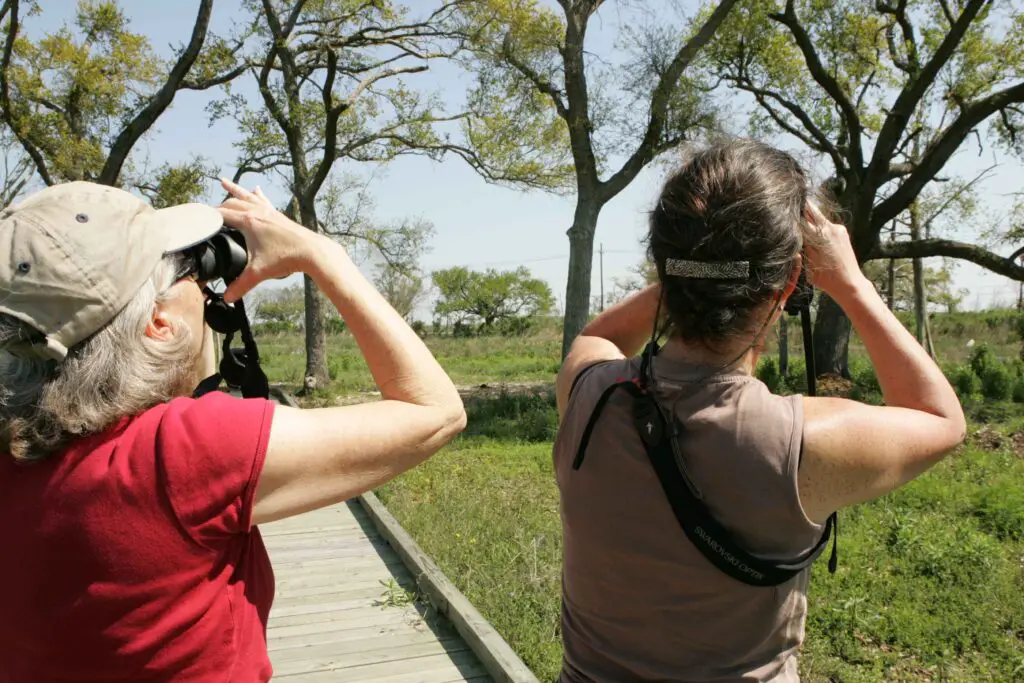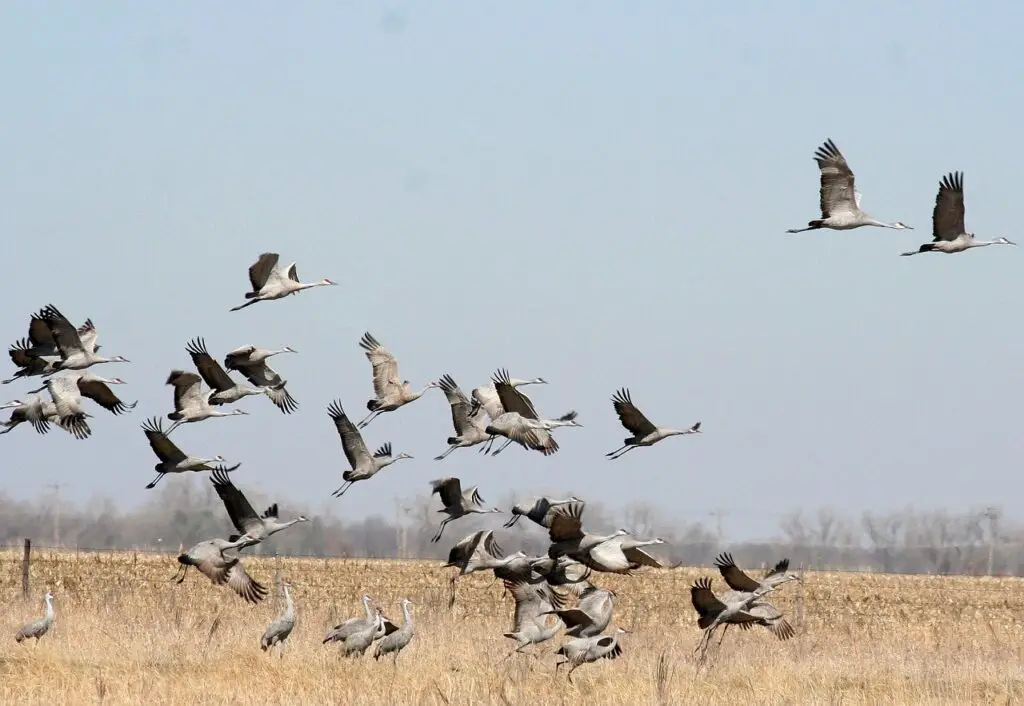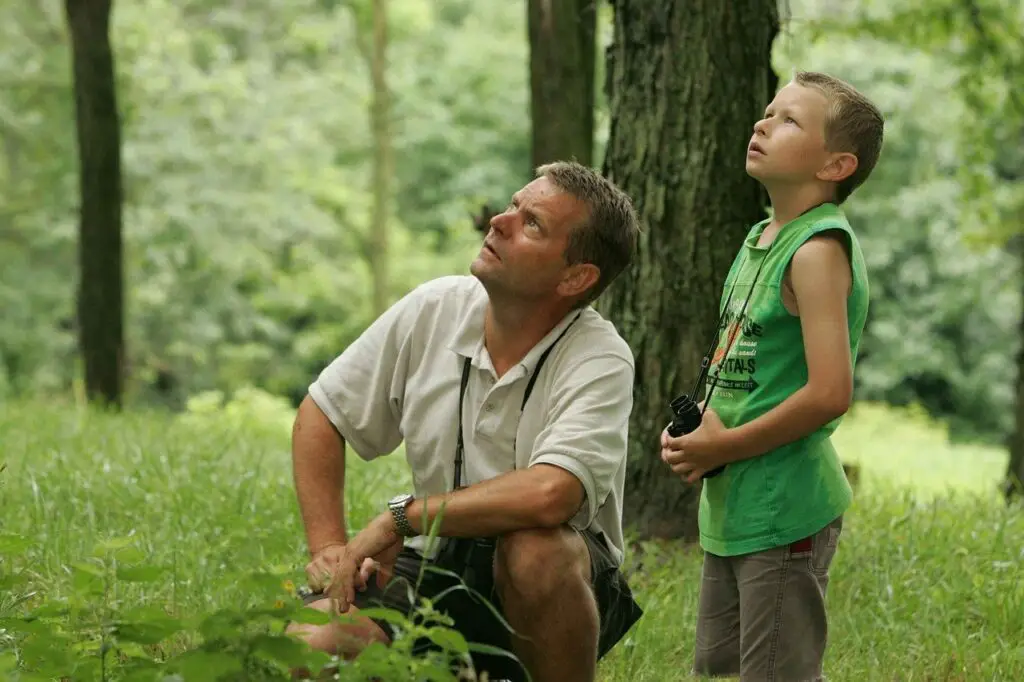Birdwatching Rules and Etiquette To Enjoy Birdsighting In The Best Way
Birdwatching is one of the best ways to enjoy wildlife. However, it can negatively affect wild birds if you’re not careful and don’t follow the rules and etiquette of birdwatching. People often forget to behave mindfully out of ignorance of getting caught up in an exciting moment.
Whether you’re a backyard birdwatcher or enjoy this hobby by going to a natural bird sanctuary, you must follow the birdwatching rules and etiquette.
What Do Birdwatching Rules and Etiquette Mean?

Being surrounded by majestic, beautiful, and colorful birds is no less than a privilege, and it requires your respect and utmost gratitude.
Birdwatching rules and etiquette refer to minimizing the effects and stress natural bird habitats and birds face respectively by human intrusion.
These rules mitigate the effects of human presence and put the well-being and safety of birds first. Here’s a list of birdwatching rules and etiquette that you must follow.
Birdwatching Rules and Etiquette to Follow
1. Keep it Quiet
Noise is one of the biggest disturbances to all wild animals, especially birds, in nature. That’s why it’s critical to keep quiet while watching birds in your backyard or natural habitat. A loud conversation between two people is more than enough to chase away birds nearby.
Not only does it allow you to enjoy bird watching but it also provides other people with some good views of different birds.
Being as quiet as possible and communicating with others in a low tone is the right solution. This way, you’ll be able to hear bird calls clearly and identify your favorite species.
2. Keep Your Distance
Keeping your distance and being respectful is one of the basic rules of birdwatching. Taking a few steps to get close to birds to have a better look can be tempting, but enjoying them from afar is important. You can always use your binoculars to have a close-up look without causing any disturbance.
If birds change their vocalization by making an alarm call, turning in a different direction, or taking a flight, it means you’re getting too close. In such situations, you should slowly back away.
Be extra careful while watching rare and endangered bird species and around places where private bird activities occur. These places include spots where birds mate, roosting areas, and feeding locations.
3. Understand and Recognize Stress Signals and Signs
A little research and practice will allow you to learn the signals of avian stress.
If you keep your distance and stay calm and quiet, you won’t observe these signs while birdwatching. However, if you do, consider it a red flag and leave their territory slowly and quietly.
Different bird species show signals of stress differently, but the most common signs include a change in tone of vocalization, the intensity of calls, nervous flapping, aggression, sudden movements, and changes in natural behavior.
You’ll also see birds flushing (a group of birds taking a flight), which is a sign of stress, and birds do it when they perceive a threat nearby.
4. Never Chase Any Bird

It sounds like an obvious rule and common sense, but many people, especially kids, ignore it.
If you’re out there with your kids, teach them not to chase any bird. Some adults also get caught up in excitement after seeing a rare or new bird species and start approaching or chasing birds to have a better look.
Birds don’t like humans chasing them. It terrifies them, and they start making a lot of alarm calls before taking a flight. As a birdwatcher, you should pay close attention to tiny details and bird moves.
Many birds fly from one place to another by covering a lot of distance. They need to rest to recover so that they can start building nests and find food. It happens during the nesting seasons (spring and fall).
You should be extra respectful during this period because your ignorance can cause all sorts of problems to birds. Chasing and running will also help predators catch the exhausted birds easily as they won’t have the required energy to escape.
5. Keep Your Phone Silent Or Put it to Airplane Mode
You probably put your phone on silent or airplane mode before attending a meeting or going to watch a movie. You should also add birdwatching to the list. You don’t want to be the individual whose mobile starts ringing obnoxiously while watching birds.
Not only will it scare the birds away, but it will also cost your fellow birdwatchers a once-in-a-lifetime opportunity. It’s one of the most important birdwatching rules that you must follow whether you’re in your backyard or out in the field.
You’re out there to appreciate the beauty of mother nature. Therefore, consider postponing your phone calls for a while.
6. Never Play any Audio
Some people use pre-recorded bird calls while they are on the field. It might be a little effective, but the truth is that it disturbs birds’ natural behavior and is completely against birdwatching etiquette.
It’s also a frowned-upon practice in the birding community and can be very dangerous in nesting places. It can scare the territorial birds away and increase the chances of nest abandonment. Resultantly, the nestlings will be left vulnerable to predators.
According to the ABA (American Birding Association) ethics code, you can only use bird recordings in specific situations, such as calling bird species that are rare or endangered or those that aren’t commonly found in a particular area.
7. Be Cautious with Nesting Birds
Building nests and feeding hatchlings are two of the most interesting bird activities. The desire to see these activities up close is understandable, but you need to keep in mind that nesting birds and their nestlings are especially vulnerable.
The stress levels of parents for their chicks will skyrocket if they see any human close to their nests. You must back away immediately but slowly if you see birds displaying distraction or turning in your direction.
The best birdwatching practice after seeing a nest is to stop and start increasing your distance. Consider using your binoculars to observe these beautiful activities from a distance.
8. Never Flush Birds to Take A Flight
Birds look beautiful and majestic when they take flight. Many photographers make birds fly just to capture this moment, but it’s against the birdwatching rules and etiquette.
This behavior is known as flushing, and it includes throwing something at birds or running towards them so that they take a flight. It might allow you to enjoy or capture some stunning movements, but it’s unethical.
Birds may have been looking for food to feed their young, resting, or trying to find nesting materials. Flying will also lead birds to use their energy needlessly, and it will cost them a lot of time and effort to find food to recover.
9. Blend into the Environment

Birds like to avoid obnoxious and bright colors as it makes them very uncomfortable. Not only will these colors scare birds away, but you also won’t be able to watch them up close.
That’s why it’s not recommended to wear clothes with red, yellow, orange, white or any bright color. Consider wearing dull and drab colors to blend in nature, and you’ll have much better luck.
Related post: What colors not to wear while birdwatching
10. Leave Your Pets Home
You would already know that keeping your pets inside helps birds build their nests in your backyard comfortably during the nesting season. If you’re going out for birdwatching to the field, consider leaving your pets at home.
It won’t scare away birds, and you also won’t put any ground-nesting bird in danger. ABA recommends that you must not practice anything that puts birds in danger.
11. Stay on Designated Paths and Trails
Many people ignore this rule even though it is easy to follow. Even if you feel that a bird you want to see is hiding on the other side of the tree, you must not leave the designated path or trail. It can put both you and the birds in danger.
You can harm yourself from a bush with thorns or a poisonous insect or plant. It’s also possible to fall and damage your expensive equipment.
On the other hand, you can damage a nest on the ground or accidentally stress out a bird. That’s why you should stay on designated paths and trails.
12. Backyard Bird Watching Rules and Etiquette
Almost all the rules discussed above also apply to backyard birdwatching.
However, there are some other important considerations to keep in mind. Installing birdhouses and bird feeders in backyards is a common practice among backyard birdwatchers.
You must keep these structures clean to prevent stale water and moldy food from affecting birds negatively. Keep your pets indoors, especially during the nesting season, to minimize birds’ exposure to danger.
You’ll also need to place bird feeders and birdhouses away from windows to prevent birds from attacking their reflections. It is also important to use native plants in your backyard that birds usually find in their natural habitat.
Respect does play a major role in making your bird watching experience fun and worthwhile. If you want to extend that birdwatching joy to your backyard, check out these fun and creative bird house roof ideas that you can create.